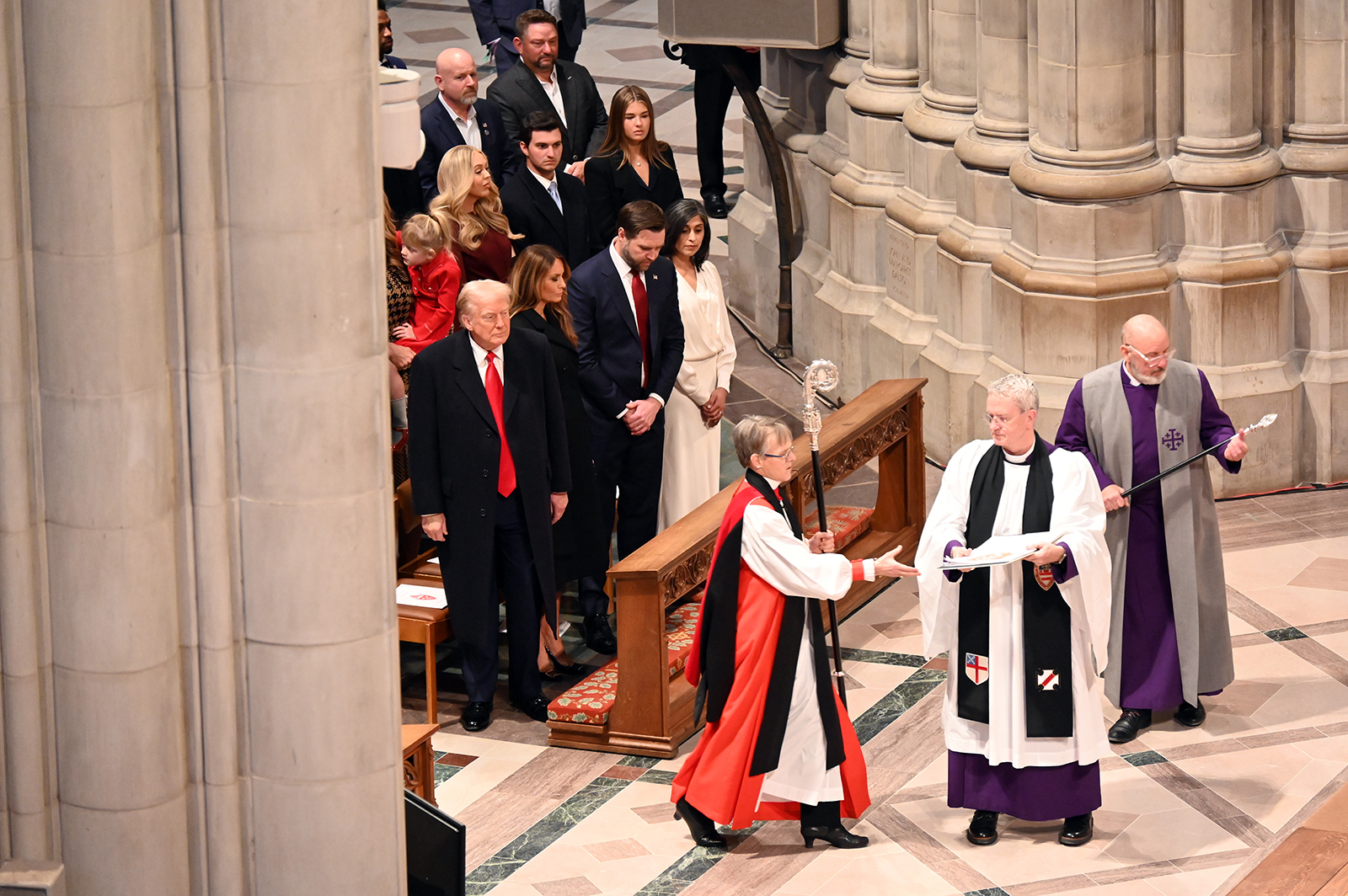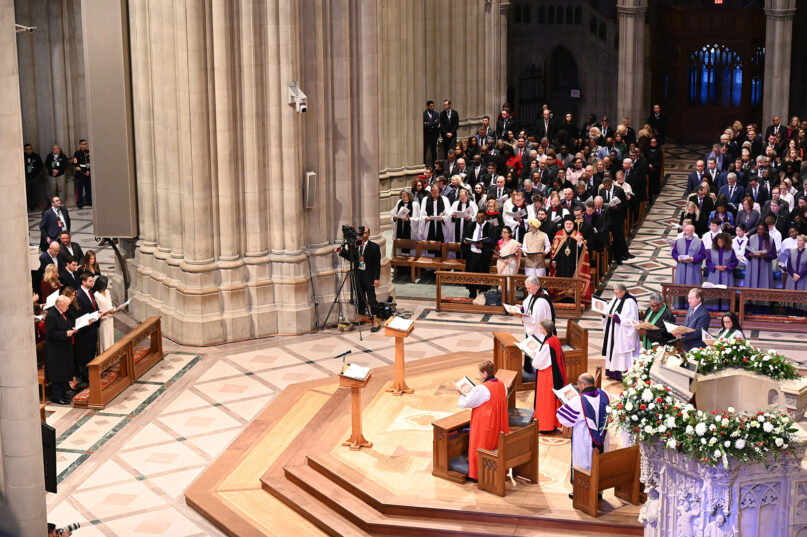
(RNS) — In the week since Bishop Mariann Budde, the Episcopal bishop of Washington, D.C., delivered a sermon at the National Prayer Service the day following President Trump’s inauguration (Jan. 21), the impact of Budde’s plea to the president to show mercy to immigrants and LGBTQ+ Americans continues to make news.
Pastors across the country read the bishop’s words from the pulpit last Sunday, even nonreligious Americans (and Orthodox Christian like me) have been praising Budde and the Episcopal Church has reported an uptick in curious newcomers and returning members. Meanwhile, a House resolution condemning Budde’s sermon has been gathering support among Republican members of Congress.
Few have asked, however, why Budde’s sermon made such an impression. For Christians, it held up an alternative to the one hawked by the Christian nationalists now holding the levers of power. But it also reminded many Americans what public religious faith looked like in America’s not-so-distant past, when the Episcopal Church — once known as “the Republican Party at prayer” — was the de facto faith of the American ruling class.
The Anglican tradition came to American shores with the English colonists (the Church of England’s first American church was built in Jamestown in 1607), as the state church of the British crown, which proved a serious liability after the American Revolution. The First Amendment to the U.S. Constitution forbade the establishment of any religion and government interference in religious life, a radical step both then and now.
The results were radical indeed: In the Second Great Awakening (1795-1835) the newly christened Episcopal Protestant Church struggled to adapt to America’s democratic and entrepreneurial religious landscape. The Holiness, Restoration and Adventist movements all took shape in this period, as did the uniquely political character of American evangelicalism, which began to enlist the power of the state to control public morality.
Amid this fruitful chaos, the Episcopal Church slowly found its way by the middle of the 19th century. Though Methodists and Baptists were more numerous and preachers of other traditions more famous, the Episcopal Church secured its position as the faith of America’s ruling class and the public face of America’s civic Christianity.

President Donald Trump and Vice President J.D. Vance, left, attend a prayer service at the Washington National Cathedral, Jan. 21, 2025, in Washington. (RNS photo/Jack Jenkins)
Flexible, moderate and reformable, it was a faith for a democratic nation, defined by progress and change, and not incidentally it presented a theological and liturgical “via media” between Protestant rulers and an increasingly Catholic populace. Though America would never have an established church, the fact that the nation was gathered at the Washington National Cathedral (an Episcopal cathedral) for the post-inaugural prayer service is a legacy of this history.
The emergence of the religious right beginning in the 1960s changed all that. The product of social changes of the mid-20th century, the religious right owes its existence as much to Southern evangelical rage at the Civil Rights Movement as it does to conservative Catholic anger at the Second Vatican Council. The alliance of old enemies still prospers by invoking common fears.
But the religious right was also an implicit attack on the character of America’s civil religion, seeking to conform its shape to evangelical Protestantism and its theology to Catholic integralism, an international movement that advocates for the establishment of what are in essence Catholic theocracies. The religious right’s greatest success, on which all its other success has relied, has been in replacing the moderate, adaptable and tolerant theology of mainline Christianity with this idiosyncratic version of evangelicalism, advancing, as the political right has, less on Christian love than in exploiting intolerance and bigotry.
The results have been disastrous, paving the way to a triumph of white Christian nationalism.
On the other side — the liberal, secular, Democratic side — there is a strange fantasy that the negative influence of these extreme-right religionists can be somehow pressured out of the public square through the separation of church and state promised by the establishment clause. This group seems to hope that slash-and-burn anti-religiosity will somehow guarantee that religion plays no role in the decision-making of voters.
Quite simply, this is not going to happen. France, with its tradition of “laïcité,” has come closest to achieving this model, but as France has become more multicultural, the limits of laïcité have been exposed as never before. In most European countries, secularization has been achieved not by pushing religion out, but by establishing it. As much as progressives may hate to hear it, established churches in Europe have provided a moderating check on religious belief and expression. American religion has grown so radical in part because there is no standard to which it can be held.
Of course, an established church is inconceivable in the American tradition, but this effect of established churches in Europe should be an important cue for those concerned about the American dilemma.
For a better part of American history, including America’s most prosperous and progressive period, the Episcopal Church filled this role. Extremists could not triumph as long as that standard was visible and credible. This is why after Budde’s sermon, Christian nationalists of all stripes, evangelical, mainline Protestant, Catholic and Eastern Orthodox, were so vitriolic in their attacks on the Episcopal Church. An empowered, visible and public Episcopal Church is a genuine threat to their power and the means they’ve used to seize it.
(Katherine Kelaidis, a research associate at the Institute of Orthodox Christian Studies in Cambridge, England, is the author of “Holy Russia? Holy War?” and the forthcoming “The Fourth Reformation.” The views expressed in this commentary do not necessarily reflect those of RNS.)
